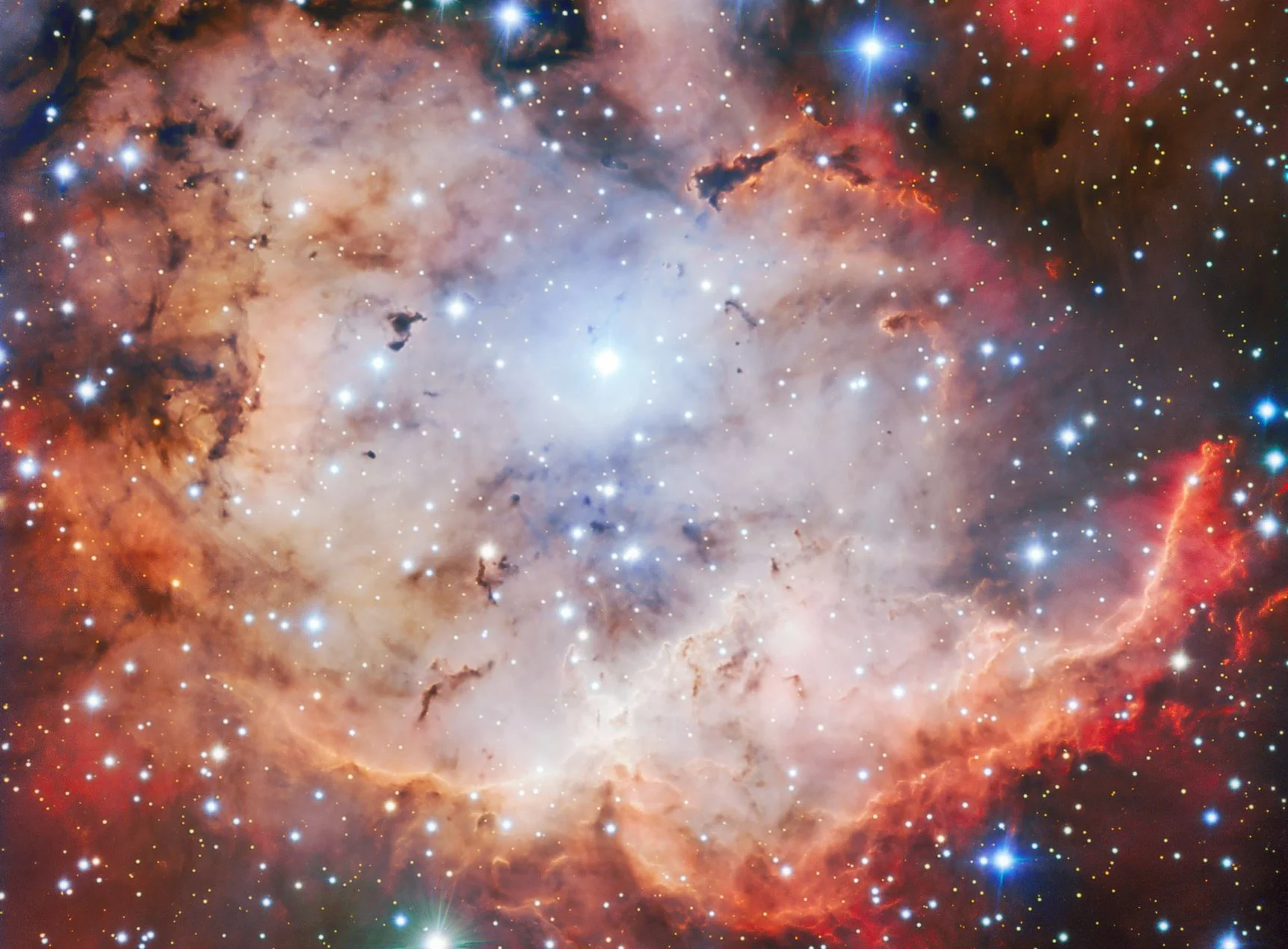Any comments, suggestions or just looking for a chat about this subject? Don't hesitate and leave a comment on our improved comment section down below the article!
This vivid picture of an active star forming region — NGC 2467, otherwise known as the Skull and Crossbones nebula — is as sinister as it is beautiful. This image of dust, gas and bright young stars, gravitationally bound into the form of a grinning skull, was captured with the FORS instrument on ESO’s Very Large Telescope (VLT). Whilst ESO’s telescopes are usually used for the collection of science data, their immense resolving power makes them ideal for capturing images such as this — which are beautiful for their own sake. - Image Credit: ESO
FORS2, an instrument mounted on ESO’s Very Large Telescope, has observed the active star-forming region NGC 2467 — sometimes referred to as the Skull and Crossbones Nebula. The image was captured as part of the ESO Cosmic Gems Programme, which makes use of the rare occasions when observing conditions are not suitable for gathering scientific data. Instead of sitting idle, the ESO Cosmic Gems Programme allows ESO’s telescopes to be used to capture visually stunning images of the southern skies.
This vivid picture of an active star-forming region — NGC 2467, sometimes referred to as the Skull and Crossbones Nebula — is as sinister as it is beautiful. This image of dust, gas and bright young stars, gravitationally bound into the form of a grinning skull, was captured with the FORS instrument on ESO’s Very Large Telescope (VLT). Whilst ESO’s telescopes are usually used for the collection of science data, they can also capture images such as this — which are beautiful for their own sake.
It is easy to see the motivation for the nickname Skull and Crossbones. This young, bright formation distinctly resembles an ominous hollow face, of which only the gaping mouth is visible here. NGC 2467 skulks in the constellation Puppis, which translates rather unromantically as The Poop Deck.
Image Credit: ESO/Digitized Sky Survey 2. Acknowledgment: Davide De Martin
This nebulous collection of stellar clusters is the birthplace of many stars, where an excess of hydrogen gas provided the raw material for stellar creation. It is not, in fact, a single nebula, and its constituent stellar clusters are moving at different velocities. It is only a fortuitous alignment along the line of sight from the Earth that makes the stars and gas form a humanoid face. This luminous image might not tell astronomers anything new, but it provides us all with a glimpse into the churning southern skies, bright with wonders invisible to the human eye.
Puppis is one of three nautically named constellations that sail the southern skies, and which used to make up the single, giant Argo Navis constellation, named after the ship of the mythical Jason and the Argonauts. Argo Navis has since been divided into three: Carina (the keel), Vela (the sails) and Puppis, where this nebula finds its home. Whilst a heroic figure, Jason is most famous for his theft of the golden fleece, so NGC 2467 rests not only in the midst of a vast celestial ship, but amongst thieves — an appropriate abode for this piratical nebula.
This image was created as part of the ESO Cosmic Gems programme, an outreach initiative to produce images of interesting, intriguing or visually attractive objects using ESO telescopes, for the purposes of education and public outreach. The programme makes use of telescope time that cannot be used for science observations. All data collected may also be suitable for scientific purposes, and are made available to astronomers through ESO’s science archive.
Source: ESO press release
If you enjoy our selection of content please consider following Universal-Sci on social media:









